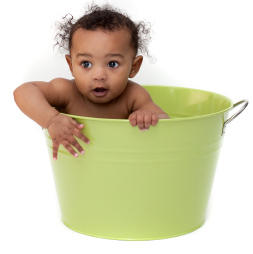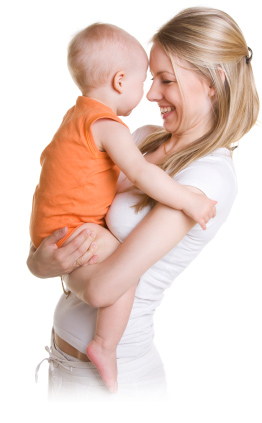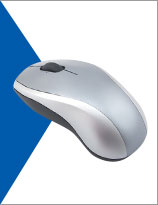
Caring for your Child's Vision
Most eye problems in children can be reversed or corrected if detected in the early stages. It is important to remember that your child does not have to be able to read, or even be able to talk coherently in order to have a thorough eye test, detecting problems early on is vital to preventing serious eye diseases that may cause vision damage or loss.
Spec-Savers optometrists believe that the essence of a child’s eye examination is flexibility which requires varying the examination according to the child’s age and degree of co-operation. Our optometrists have a special instrument called a retinoscope which enables them to see whether any visual problem exists within your child’s eyes.
Monitoring Your Child's Vision Development
The following simple age determined mile stones will help you assess if your child’s eye sight is developing normally.
At 3 months your child should:
- Follow your face from side to side.
- Smile or engage with an individual who gives it attention.
- Show interest in faces and objects held close.
At 6 months your child should:
- Reach out to be picked up by you.
- Move both eyes together.
- Reach out for objects.
At 9 months your child should:
- Show interest in nearby activities of people or animals.
- Recognise and engaged with a small toy.
- Look to see where a fallen object has dropped.
At 12 months your child should:
- Recognise familiar people from across a room.
- Enjoy the interaction of peek-a-boo.
- Recognise and pick up small objects using his/her thumb and first finger.
If you have any doubts you should have your baby's eye's checked by a professional Spec-Savers optometrist.
Routine kids' vision tests include
 All infants should undergo routine eye health checkups during the first year of their life, usually conducted by a pediatrician in conjunction with your Spec-Savers optometrist.
All infants should undergo routine eye health checkups during the first year of their life, usually conducted by a pediatrician in conjunction with your Spec-Savers optometrist.- Around age 3½, kids should undergo eye health screenings and visual acuity tests (tests that measure sharpness of vision) with their pediatrician or family doctor.
- Around age 5, kids should have their vision and eye alignment evaluated by your Spec-Savers optometrist. Those who show abnormalities in development should undergo further tests by an ophthalmologist along with our Spec-Savers accredited optometrist.
- After age 5, further routine screenings should be done annually at school or by your Spec-Savers optometrist, especially if symptoms such as squinting or frequent headaches occur.
Kids who wear prescription glasses or contacts should have annual checkups by a Spec-Savers optometrist to screen for vision changes.
Spotting eye problems
Signs that a child may have vision problems include:
- constant eye rubbing
- extreme light sensitivity
- poor focusing
- poor visual tracking (following an object)
- abnormal alignment or movement of the eyes (after 6 months of age)
- chronic redness of the eyes
- chronic tearing of the eyes
- a white pupil instead of black
In school-age children, watch for other signs such as:
- inability to see objects at a distance
- inability to read the blackboard
- squinting
- difficulty reading
- sitting too close to the TV
Watch your child for evidence of poor vision or crossed eyes. If you notice any eye problems, have your child’s eyes tested immediately so that the problem doesn't become permanent. If caught early, eye conditions in children often can be corrected.
How you can you help stimulate your child’s visual development
 All children have an innate desire to fit in with everyone around them, whilst you may appreciate your child for their uniqueness and individualism, not all children will have a positive self-esteem if they look different from their peers due to wearing spectacles.
All children have an innate desire to fit in with everyone around them, whilst you may appreciate your child for their uniqueness and individualism, not all children will have a positive self-esteem if they look different from their peers due to wearing spectacles.
You can prepare your child for the change of wearing spectacles using the following techniques:
1. Make it Fun
Set aside a day where you and your child can go shopping for frames. Give your child freedom to choose ones that he/she likes and will feel good wearing. You can also buy a fun, brightly colored case, or a case with his or her favorite cartoon character, that he/she will enjoy carrying around.
2. Show Pictures
Look through magazines and books to show your child that he/she are not alone, use your child’s favorite cartoon character or movie actor as an example. This can help your child to feel that wearing glasses can be cool.
3. Teach Proper Care
Teach your child how to properly care for his/her glasses. Show him/her what to do, then give him/her the materials and let him/her try it alone. Your child will gain a sense of responsibility and pride, which will make him/her feel more like an adult.
Around age 10, kids may express a desire to get contact lenses for cosmetic reasons or convenience if they play sports. Allowing a child to wear contacts depends on his or her ability to insert and remove lenses properly, faithfully take them out as required, and clean them as recommended by the optometrist.
Your Spec-Savers optometrist can help you decide what type of vision correction is best for your child.

.jpg)





